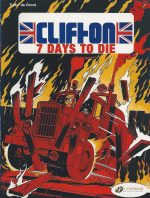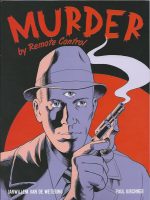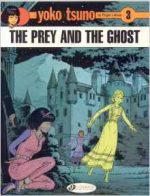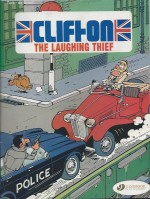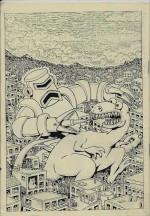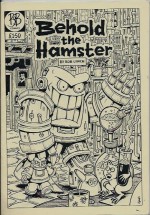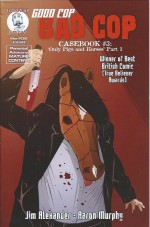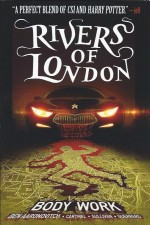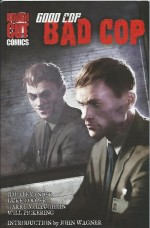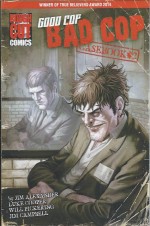

By Nicholas Burns, Jose Kusugak, Michael Kusugak, Germaine Arnaktauyok, George Freeman, Susan Shirley & various (Renegade Arts Entertainment)
ISBN: 978-1-98782-503-9
According to the Introduction by project instigator Nicholas Burns, this edition of Arctic Comics has been a long time coming. Springing out of his 1986 prototype comics anthology – created for the World Exposition of that year – the work here was originally intended for its 1992 sequel. Thanks to life and an astounding number of other worthy and worthwhile endeavours, that book now materialises as this superb oversized full-colour hardback album.
It certainly hasn’t suffered for the wait…
Offering a clutch of tales by creators from the far north – most of them of Inuit heritage – this Arctic Comics is a magnificent melange of mirth, murder, mythology, merriment and adventure that feels authentically hale, hearty and welcoming: gathering yarns and entertainments from a land and culture which values the power of stories…
Setting the ball rolling is a smart silent-gag strip starring Sheldon the Sled Dog who endures his own frustrating ‘Hunger Games’ courtesy of Burns before revered author, advocate, scholar and cultural proponent Jose Kusugak unites with noted Inuit printmaker Germaine Arnaktauyok to share their retelling of an Inuit creation myth when ‘Kiviuq meets Big Bee’.
Long ago in the time when men and animals were one, both could change shape and one could never be sure what you were dealing with. Kiviuq was the first man and one day he became circumstantially embroiled in the death of an able man and good provider. The dead man’s grandmother Angakkuq held Kiviuq and all the other village men equally responsible and used her magic to punish them all, luring them out to sea on a seal hunt and smashing them with a storm…
Kiviuq knew many things and survived the assault but it took many years to find his home again. Moreover, every landfall was fraught with peril such as this encounter with the eyelid-stealing woman known as Iguptarjuaq or Big Bee…
That mythological Arctic odyssey is followed by ‘On Waiting’: a poetic paean to childhood at the top of the world from author Michael Kusugak (Baseball Bats for Christmas, The Shaman) and celebrated landscape artist Susan Thurston Shirley. A moving celebration of a childhood packed with everyday delights – hunting, warm clothes, playing soccer under the illumination of the Northern Lights – is coloured with simple acceptance and edged with the pain of early loss…
Sled Dog Sheldon hilariously pops back on a snowy night – aren’t they all? – looking for ‘Any Port in a Storm’, after which Burns displays his pictorial versatility to detail romantic entanglements and sporting pride at war in ‘The Great Softball Massacre’.
Originally entitled ‘The Great Slo-Pitch Massacre’ this mini soap-opera is splendidly reminiscent of cult comedy movie classic Men with Brooms: a tale of young love gone wrong during a municipal slo-pitch tournament between deadly rivals.
In case you’re wondering, slo-pitch is like Softball or Rounders – except in the ways it differs – and is championed by beer leagues and other manful aggregations of inebriates across North America too far gone to indulge in the rigours and dangers of a real sport. It’s not Life and Death: it’s far more serious that that….
Slipping back into his Ligne Clair-informed Hergé style, Burns then introduces RCMP sleuth Constable Puqittuq and her Loyal Sled Dog Vincent in ‘Film Nord’ where the canny Inuk investigator uncovers skulduggery on a tundra movie location. Clearly shot through with weirdoes and probable perps, the long list of suspects dwindles and before long the sagacious peacekeeper discovers the victim’s death is the result of a most uncanny act…
Wrapping up the excitement is a dark and sinister eco-thriller by Burns and Winnipeg-based comicbook veteran George Freeman (Captain Canuck, Batman, Jack of Hearts, Elric: Weird of the White Wolf). ‘Blizzard House: a Future Arctic Adventure’ finds a couple of horny teenagers trapped in a prototype passive-energy wonder-house of tomorrow, even as a murderous energy baron attempts to sabotage and destroy the looming threat to his corporate cash cow…
Enthralling, astounding and beguilingly exotic, this collection of comics treasures offers tantalisingly different visions and voices that will appeal to every funnybook fan who thinks they’ve already seen everything under the sun…
Arctic Comics, the stories, characters, world and designs are copyright their respective writers and artists. This edition © Renegade Arts Canmore Ltd. 2016.
This book is available in English, Inuktitut and French editions.

